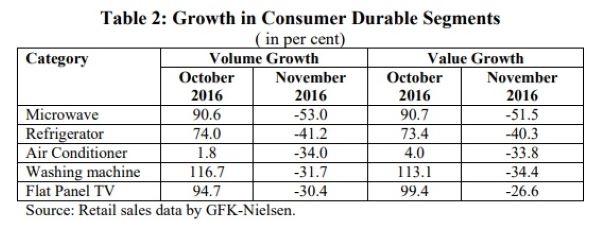
On November 8 2016, Prime Minister Narendra Modi announced the demonetisation of Rs 1000 and Rs 500 notes in circulation. The aim was to stop a thriving parallel economy dominated by unaccounted ‘black’ money and fake currencies. Five years later, the notes in circulation and fake currency seizures continue to rise, prompting critics to pronounce the move a failure, but the Indian economy benefitted from the note ban in more ways than one.
The demonetisation had a telling effect on the country’s informal economy and hit the micro, small and medium enterprises hard. However, it also led to several positive changes. One of the major achievements was the increase in digital financial literacy and the rise of online payments. This, along with the improvements in technology, played an important role in establishing the trust of the public in digital payment gateways. The digital finance revolution saw the emergence of a large number of fintech and techfin players, leading to universal use of digital wallets by consumers and sellers — from street vendors to organised retail outlets.
READ I Can Indian economy emulate the Chinese miracle?
Digital transformation of Indian economy
The most important change for service providers happened in the informal sector. The digital transformation triggered by demonetization became handy during the Covid-19 outbreak and the strict lockdown adopted to curb its spread. Cashless and touchless deliveries of all types of products helped India cushion the impact of the pandemic on the economy. Life of Indians became simpler with the advent of online service/product apps. This phenomenon is not limited to Tier 1 cities, as people in Tier 2 and 3 cities also embraced the digital revolution. Digital payment gateways contributed to financial inclusion and literacy in villages.
Thanks to demonetization, mobile phones have replaced cash in most transactions by households and businesses to a large extent. Consumers are no longer required to carry cash, even during odd hours and for very small transactions, as payment gateways are accepted by all vendors. So the number of currencies in circulation has grown after 2016, but digital transactions have grown faster. Digital money is accepted everywhere, leading to increased trust and confidence of the public.

While the middle and lower-middle class has been affected by job losses and salary cuts, the upper-middle class is enjoying better quality of life. They have more quality time at their disposal as the time spent at banks, ATMs, and offices has come down drastically. Most bank-related work including opening of accounts, recurring deposits, fixed deposits and loans is now done online. Though banking frauds are inevitable in this transformation, the numbers are negligible and the government is taking steps to eliminate cybercrimes. A large number of people are confident to undertake online transactions.
READ I Indian economy: GST collection bring cheer, but concerns over recovery linger
Blow to informal economy
One of the strongest criticisms of demonetisation is that it damaged the construction and real estate sector beyond repair. While this is partially true, the asset bubble in the property market has been busted and all transactions are now happening through banks. This has made property deals transparent and contributed to the formalisation of the economy. Demonetisation led to massive digitisation of the banking system, improving data flow. This enabled the government to get the pulse of the economy and come up with suitable policies for different segments of society.
Demonetisation and the resultant digitisation and formalisation of the Indian economy allowed the government to have a smooth GST rollout in July 2017. The most important contribution of demonetisation is in the formalisation of the informal sector that led to tax buoyancy. Digitisation led to a revolution in the gig economy which further accelerated the formalisation of the economy. Demonetisation and GST saw the informal economy shrinking to 15-20% of the formal GDP from 52% just three years ago, according to a report by SBI. The report estimates that around Rs 13 lakh crore was added to the formal economy in the last few years.
The money transfers by the government under various schemes for the poorest sections of society are done directly to beneficiary accounts. This has made a difference in the lives of the below poverty line population. The poorest are now connected with the mainstream economy and welfare schemes. Digital financial literacy has also led to the empowerment of women. It is also helping non-profits, self-help groups and cooperatives market their products and services online and encash the benefits of government schemes.
Despite its flaws, demonetisation has been beneficial to the Indian economy. It triggered the growth of fintechs, techfins and the gig economy, creating a large number of jobs. Today, more Indians are connected to the financial mainstream than five years ago. The years after demonetisation saw the MSMEs struggling to stay afloat despite several schemes and sops announced by the government and the RBI. There were also massive job losses and salary cuts to the detriment of the middle class. Despite all these, the processes triggered by demonetisation will augur well for India which is on track to become a $5 trillion economy.
(Shalini Sharma is Professor of Economics at Christ Deemed to be University, Bangalore. The views expressed in this article are personal.)
